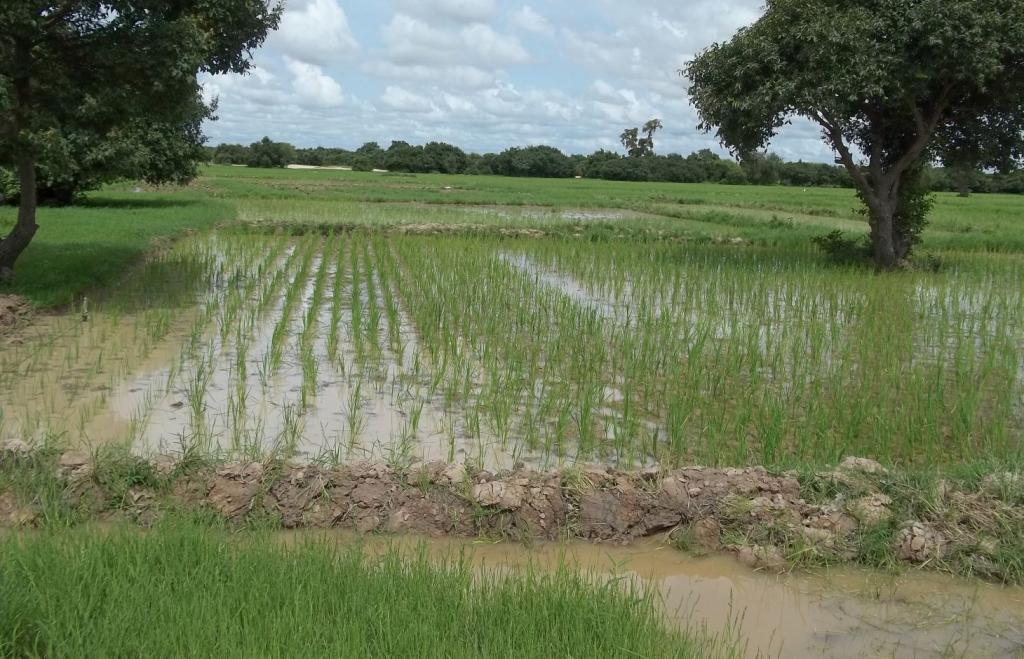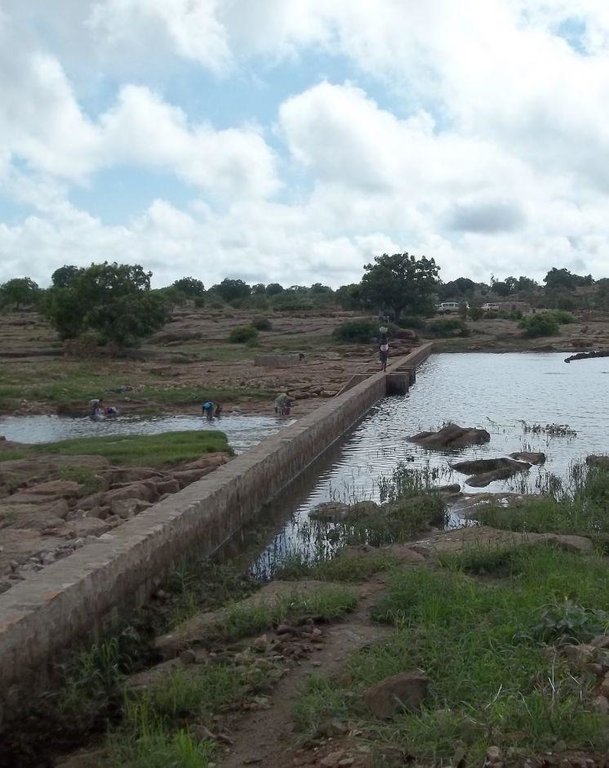Developing lands adjacent to small-scale irrigation schemes [Мали]
- Создание:
- Обновить:
- Составитель: Dieter Nill
- Редактор: –
- Рецензент: Laura Ebneter
Mise en valeur de terres adjacentes à la petite irrigation (French)
approaches_2514 - Мали
Просмотреть разделы
Развернуть все Свернуть все1. Общая информация
1.2 Контактные данные специалистов и организаций, участвующих в описании и оценке Подхода
Специалист по УЗП:
Dako Jean Parfait
parfaitdako@yahoo.fr
Direction Nationale de l'Agriculture (DNA)
Мали
Название организации (-ий), содействовавших документированию/оценке Подхода (если применимо)
Direction Nationale de l'Agriculture (DNA) - МалиНазвание организации (-ий), содействовавших документированию/оценке Подхода (если применимо)
Deutsche Gesellschaft für Internationale Zusammenarbeit (GIZ) GmbH (GIZ) - Германия1.3 Условия, регламентирующие использование собранных ВОКАТ данных
Когда были собраны данные (на местах)?
01/07/2012
Составитель и ответственный/-ые специалист(-ы) согласны с условиями, регламентирующими использование собранных ВОКАТ данных:
Да
2. Описание Подхода УЗП
2.1 Краткое описание Подхода
Ensure the optimum exploitation of flood recession areas around bodies of water in order to improve agricultural production.
2.2 Подробное описание Подхода
Подробное описание Подхода:
The objective of this practice is to ensure the optimum exploitation of flood recession areas around bodies of water in order to improve agricultural production. This involves using water wisely by choosing suitable crops for the strips of adjacent land.
With this method, it is possible to manage the different water levels around reservoirs. Crops are chosen according to the water level: floating rice for areas where water is deeper; erect rice for moderate depths; and maize, vegetables and trees where surface-water levels are low.
Before the site is developed, farming advisors from the National Directorate of Agriculture (DNA) provide training to growers on benefits, constraints, possible land uses and the operating plan for the land. While the scheme is being built, rural engineering agents inform growers about how to maintain the scheme. Once the scheme is built, the rural engineering service provides training to growers and farming advisors on how to operate the scheme. A village committee is set up to manage the scheme. Committee members must be available and prepared to work in the interest of the community. Crop layouts and land allocations are formalised in an operating plan created consensually with growers. Areas around the reservoir are catalogued and the village council – with the support of technical experts (farming and rural engineering) – then allocate the lands in accordance with the three sections established: the deep section, the moderate-level section and the low-water section. Operation: In collaboration with the growers, the farming advisors set the farming calendar (ploughing, sowing, weeding, etc.) for each of the three sections around the reservoir. The calendar must be adhered to by everyone concerned. The advisors carry out regular monitoring of farming activities and propose corrective measures. The scheme management committee monitors the provision of agricultural inputs, compliance with the operating plan, adherence to the agricultural calendar and the condition of the scheme, and it undertakes repairs when required.
Three essential success factors for managing a reservoir have been identified: the organisation of growers around the scheme to ensure all aspects (infrastructure, lands, water) are well managed; the maintenance of the scheme and reservoir banks (if the banks degrade, the adjacent land may erode or be lost); adherence to the agricultural calendar, which is key for getting the best results from installations.
Village councils participate in the allocation of land to prevent conflicts and ensure compliance with the conditions of the land allocation and the rules in place for the scheme. The management committee ensures the upkeep of the scheme and the supply of agricultural inputs through bulk purchasing. Growers must comply with the agricultural calendar and correctly apply the recommended cropping techniques. Farming advisors train growers, monitor the farming of the site and recommend high-performing and suitable varieties. Rural engineering experts provide training on scheme maintenance, management and monitoring.
2.3 Фотографии, иллюстрирующие Подход
2.5 Страна/ регион/ место, где применялся Подход
Страна:
Мали
Административная единица (Район/Область):
Mali
Более точная привязка места:
Sikasso, Kita, Kati
Map
×2.6 Даты начала и окончания реализации Подхода
Год начала реализации:
2004
2.7 Тип Подхода
- в рамках проекта/ программы
2.8 Каковы цели/ задачи Подхода
The objective of this practice is to ensure the optimum exploitation of flood recession areas around bodies of water in order to improve agricultural production. This involves using water wisely by choosing suitable crops for the strips of adjacent land.
The SLM Approach addressed the following problems: manage the different water levels around reservoirs
2.9 Условия содействующие применению Технологии/ Технологий в рамках Подхода или затрудняющие его
Осведомленность в области УЗП, доступность технической поддержки
- затрудняют
low exploitation of flood recession areas around bodies of water
Treatment through the SLM Approach: With this method, it is possible to manage the different water levels around reservoirs. Crops are chosen according to the water level: floating rice for areas where water is deeper; erect rice for moderate depths; and maize, vegetables and trees where surface-water levels are low.
3. Участие и распределение ролей заинтересованных сторон
3.1 Заинтересованные стороны, участвующие в реализации Подхода и их роли
- местные землепользователи/ местные сообщества
- эксперты по УЗП/ сельскому хозяйству
- местные власти
- государственные власти (отвечающие за планирование или принятие решений)
- международные организации
3.2 Участие местных землепользователей/ местных сообществ на разных стадиях реализации Подхода
| Участие местных землепользователей/ местных сообществ | Перечислите участников и опишите их вовлеченность | |
|---|---|---|
| инициирование/ мотивация | пассивное | |
| планирование | пассивное | |
| выполнение | интерактивное | |
| мониторинг/ оценка | пассивное | |
| Research | пассивное |
3.4 Принятие решений по выбору Технологии/ Технологий УЗП
Укажите, кто принимал решение по выбору применяемой Технологии/ Технологий:
- преимущественно специалисты по УЗП после консультаций с землепользователями
Поясните:
Decisions on the method of implementing the SLM Technology were made by mainly by SLM specialists with consultation of land users
4. Техническая поддержка, повышение компетенций и управление знаниями
4.1 Повышение компетенций/ обучение
Проводилось ли обучение землепользователей/ других заинтересованных лиц?
Да
Укажите, кто проходил обучение:
- землепользователи
Тип обучения:
- в ходе работы
- общие собрания
- курсы
Рассматриваемые темы:
Before the site is developed, farming advisors from the National Directorate of Agriculture (DNA) provide training to growers on benefits, constraints, possible land uses and the operating plan for the land. While the scheme is being built, rural engineering agents inform growers about how to maintain the scheme. Once the scheme is built, the rural engineering service provides training to growers and farming advisors on how to operate the scheme.
4.2 Консультационные услуги
Есть ли у землепользователей возможность получать консультации?
Да
Укажите, где именно оказываются консультационные услуги:
- на полях землепользователей
Описание/ комментарий:
Key elements: farming advisors from the National Directorate of Agriculture (DNA) provide training to growers on benefits, constraints, possible land uses and the operating plan for the land, rural engineering agents inform growers about how to maintain the scheme, rural engineering service provides training to growers and farming advisors on how to operate the scheme
4.3 Институциональная (организационная) поддержка
В ходе реализации Подхода были ли организованы новые институциональные структуры или поддержаны уже существующие?
- да, умеренно
Укажите уровень, на котором структуры были укреплены или вновь созданы:
- местные
Укажите тип поддержки:
- финансовая
- повышение компетенций/ обучение
- оборудование
4.4 Мониторинг и оценка
Являются ли мониторинг и оценка частью Подхода?
Да
Комментарии:
technical aspects were regular monitored by project staff through observations
economic / production aspects were regular monitored by project staff through observations
management of Approach aspects were regular monitored by project staff through observations
provision of agricultural inputs aspects were regular monitored by project staff through measurements
farming of the site aspects were regular monitored by project staff through observations
There were no changes in the Approach as a result of monitoring and evaluation
There were no changes in the Technology as a result of monitoring and evaluation
4.5 Научные исследования
Были ли научные исследования частью Подхода?
Да
Укажите темы исследований:
- социология
- экономика / маркетинг
- экология
- технология
5. Финансирование и внешняя материальная поддержка
5.2 Финансирование и внешняя материальная поддержка, предоставляемая землепользователям
Предоставлялась ли землепользователям финансовая/ материальная поддержка для применения Технологии /Технологий?
Да
5.3 Субсидии на отдельные затраты (включая оплату труда)
- оборудование
| Укажите, какие ресурсы были субсидированы | В какой степени | Опишите субсидии подробнее |
|---|---|---|
| техника | профинансированы полностью | |
| инвентарь/ инструменты | профинансированы полностью | |
- другие
| Другой (какой именно) | В какой степени | Опишите субсидии подробнее |
|---|---|---|
| training | профинансированы полностью |
Если труд землепользователя был существенным вкладом, укажите, был ли этот вклад:
- добровольный
6. Анализ влияния и заключительные положения
6.1 Влияние Подхода
Сумел ли Подход помочь землепользователям внедрить и поддерживать технологии УЗП?
- Нет
- Да, немного
- Да, умеренно
- Да, существенно
With this method, it is possible to manage the different water levels around reservoirs. Crops are chosen according to the water level: floating rice for areas where water is deeper; erect rice for moderate depths; and maize, vegetables and trees where surface-water levels are low.
Сумел ли Подход расширить возможности социально и экономически уязвимых групп?
- Нет
- Да, немного
- Да, умеренно
- Да, существенно
Did other land users / projects adopt the Approach?
- Нет
- Да, немного
- Да, умеренно
- Да, существенно
The practice has been applied in Sikasso Circle (two communes), Kita Circle (two communes) and Kati Circle (one commune). The practice has been applied in over 35 schemes for around 10 years.
Did the Approach lead to improved livelihoods / human well-being?
- Нет
- Да, немного
- Да, умеренно
- Да, существенно
optimum exploitation of flood recession areas around bodies of water in order to improve agricultural production
Did the Approach help to alleviate poverty?
- Нет
- Да, немного
- Да, умеренно
- Да, существенно
6.2 Основные причины, побуждающие землепользователей внедрять УЗП
- рост продуктивности
- рост прибыли (доходности) и рентабельности
6.3 Долгосрочная устойчивость мероприятий в рамках Подхода
Могут ли землепользователи самостоятельно (без внешней поддержки) продолжать применение того, что было реализовано в рамках Подхода?
- да
6.4 Сильные стороны/ преимущества Подхода
| Сильные стороны/ преимущества/ возможности по мнению составителя или других ключевых специалистов |
|---|
| Once good land and water management are assured, the first notable effect is the safeguarding of agricultural activity. As a result of this, agricultural production increases in the villages. (How to sustain/ enhance this strength: When growers demonstrate a strong desire to develop the scheme in this way, its sustainability is guaranteed. Farming advisors are on hand to support growers in the sound exploitation of lands adjacent to reservoirs.) |
| optimum exploitation of flood recession areas around bodies of water in order to improve agricultural production |
| With this method, it is possible to manage the different water levels around reservoirs. Crops are chosen according to the water level. |
7. Справочные материалы и ссылки
7.1 Методы сбора/источники информации
- выезды на места, полевые обследования
- опросы землепользователей
7.2 Ссылки на опубликованные материалы
Название, автор, год публикации, ISBN:
Manual of Good Practices in Small Scale Irrigation in the Sahel. Experiences from Mali. Published by GIZ in 2014.
Где опубликовано? Стоимость?
http://star-www.giz.de/starweb/giz/pub/servlet.starweb
Название, автор, год публикации, ISBN:
Exploitation des petits aménagements hydro-agricoles [Farming small-scale irrigation schemes] (DNA 2011)
Ссылки и модули
Развернуть все Свернуть всеСсылки
Нет ссылок
Модули
Нет модулей





